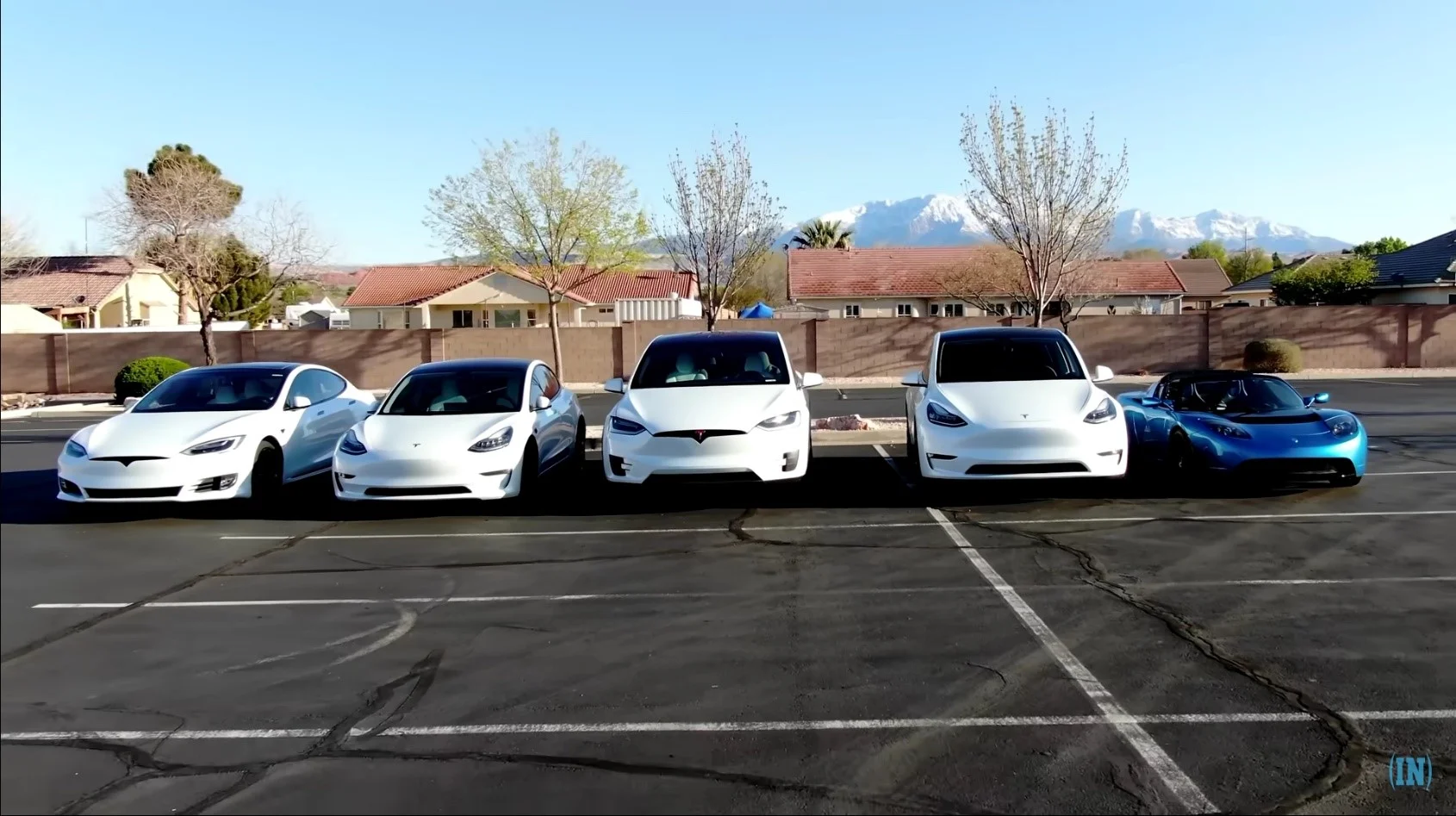Comparisons Of All Tesla Screen Dimensions and Size
We're an affiliate
We hope you love the products we recommend! Just so you know, we may collect a share of sales or other compensation from the links on this page. Thank you if you use our links, we really appreciate it!
Table of Contents
Tesla is well known for its innovative technology, and the huge touchscreen display is one of the models’ most notable features. These panels demonstrate Tesla’s commitment to a clean and intuitive design by acting as the command centre for everything from music to navigation. Below are the listed Tesla screen dimensions and features that have evolved from 2012 to 2024.
Vertical Screens in Tesla’s Model S and Model X (2012-2020)


The Tesla Model S and X core interface features a vertical 17-inch touchscreen that displays important data such as speed, range, and charging status, simplifying the control of car operations. A 12.3-inch instrument cluster behind the steering wheel complements this setup by offering crisp driving data with an aspect ratio of 8:3 and a resolution of 1280 by 480 pixels. This configuration seamlessly integrates with Tesla’s minimalist interior design, providing easy access to important vehicle data and managing functionality, and creating a smooth, intuitive user experience.
It’s on the note of cleaning up user interaction and optimizing space for Tesla to move the Model S and Model X to vertical screens. In doing so, adopting a larger display set in a vertical format allowed Tesla to increase their capability concerning visibility and accessibility of the most critical vehicle data and controls. This design decision not only helped to simplify the usage process but also conformed to Tesla’s minimalistic philosophy in design, where simplicity and functionality were paramount. Generally, this change to vertical screens reflects Tesla’s continuing efforts toward innovation in automotive technologies and user-oriented design.
- The shift to vertical screens in Tesla’s Model S and Model Y from earlier horizontal configurations signifies a deliberate move towards enhancing user interaction and maximizing dashboard efficiency.
- Optimizes the visibility and accessibility of crucial vehicle data and controls but also aligns seamlessly with Tesla’s minimalist interior design philosophy.
Tesla’s Model S and Model X with Horizontal Screens from 2021 Onward


Since 2021, Tesla has introduced horizontally oriented screens in its Model S and Model X, marking a significant design evolution. The Model X features a prominent 17-inch display with a 16:9.5 aspect ratio and a high resolution of 2200 by 1300 pixels, delivering crisp visuals at approximately 150 pixels per inch (PPI). This expansive screen serves as the central hub for controlling vehicle functions and presenting detailed visualizations. Both models retain an instrument cluster for quick access to essential driving information, complemented by an 8-inch rear display updated in 2022 for improved aesthetics and functionality. The centre display’s ability to tilt left and right enhances usability, catering to driver preferences and optimizing interaction within the vehicle’s interior.
- The introduction of horizontal screens in 2021 represented a significant shift in Tesla’s design philosophy, enhancing user interaction and visibility for navigation and media purposes.
- This change is driven by technological advancements and the need to align with broader consumer electronics trends.
- The larger, horizontal screens provide more intuitive interfaces, contributing to a sleek, modern look that underscores Tesla’s commitment to innovation and cutting-edge automotive design.
Tesla Screen Dimensions and Design of Tesla’s Model 3 and Model Y


The Tesla Model 3 and Model Y both feature a horizontal 15.4-inch central touchscreen with a 16:9 aspect ratio and a resolution of 1920 by 1200 pixels, offering just below 150 pixels per inch (PPI). These large, high-resolution displays embody Tesla’s minimalist design philosophy, prioritizing a clean and user-friendly interface for controlling vehicle functions and presenting essential information. Consequently a traditional instrument cluster is absent, relying instead on thecentralized touchscreen for all driving-related data and interactions within the vehicle.
The progression in the screen size of Tesla’s Model 3 and Model Y marks a significant shift toward enhancing user interaction. This evolution was driven by the need to centralize and streamline vehicle operations, creating a user-friendly management system that aligns with trends in consumer electronics. The larger, horizontal screens improve the user experience with more distinct, accessible controls and information, underscoring Tesla’s commitment to state-of-the-art functionality and design in their electric cars.
Tesla Screen Dimensions and Features of Tesla’s Cybertruck


The Tesla Cybertruck will packs a significant large 18.5-inch horizontal display; the largest screen used on a Tesla so far. Adhering to Tesla’s design philosophy of the future, this central touchscreen acts as the primary interface through which control of vehicle functions is achieved or intricate information accessed. Furthermore,unlike in traditional setups, there won’t be an instrument cluster in the Cybertruck. Driver interaction and all displays will be based on the large touchscreen. Second, given the approximate dimensioning of the rear screen, it will support the vehicle’s technological features very well in the user experience.

- The expansive screen powers functionality and visibility of controls with the futuristic design of the Cybertruck, aiming to achieve a broader user experience with better interaction.
- Proposed rear screen that enhances passenger usability with more control and information.
Comparison of Tesla Screen Dimensions By Models (2012-2024)

Conclusion
Starting with Tesla’s vertical screens on earlier models like the Model S and Model X, which then introduced larger horizontal displays on more recent vehicles such as the Model 3, Model Y, and Cybertruck. It becomes apparent to how screen size has been playing a big role in bettering user interaction and functionality. Every iteration of the screen attests to Tesla’s ideology of making drivers project intuitive interfaces that work in cohesive collaboration with their minimalist interior designs.
Categorised in: Automotive





